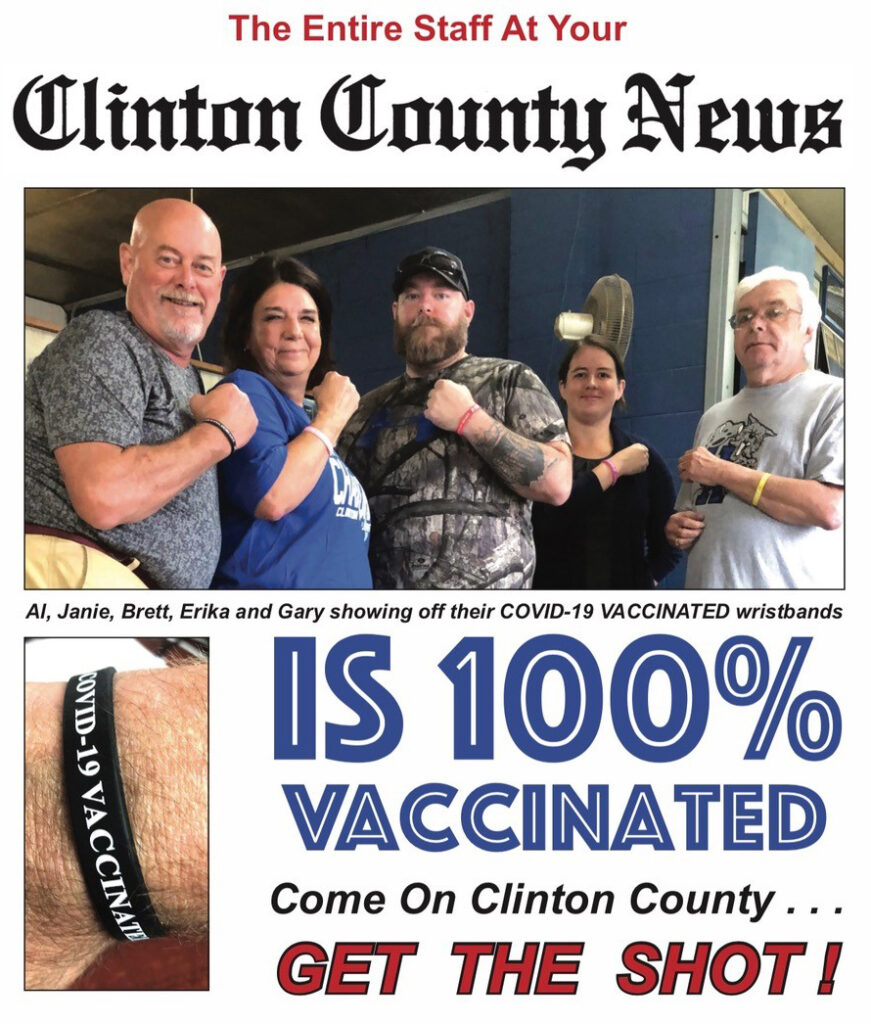Health-insurance companies’ group makes 27 grants of up to $25,000 each to improve vaccination rates in Kentucky

The Kentucky Association of Health Plans, which represents companies offering health insurance in Kentucky, has awarded 27 grants aimed at increasing acceptance of vaccines, especially those for Covid-19.
The Institute for Rural Journalism and Community Issues at the University of Kentucky, which publishes Kentucky Health News, obtained a $25,000 grant for the Kentucky Press Association to subsidize publication of special vaccination sections in newspapers that will be delivered to every household in some low-vaccination counties.
The Clinton County News received a grant that Editor-Publisher Alan Gibson said will be used for four-color advertising to recognize local employers that have 100 percent vaccination rates, modeled after the “house ad” that he ran about his own business.
“In September, KAHP completed a Disney trip sweepstakes for 20 grand prize winners who received their shots during the month of September. In August, in partnership with Volunteers of America Mid-states, KAHP launched ‘Take 1 for the Team,’ a hyper-local, targeted vaccine outreach and incentive campaign in Clay County, which combines heavy digital advertising featuring local influencers like pastors, coaches, doctors, and others, as well as offers for free food, free drawings for cash prizes, a free professional wrestling match, and a competition between local schools for $6,000 in sports equipment.
“In June, KAHP visited Mercer, Montgomery, Estill, Nicholas, and Rockcastle counties for a ‘Hottest Concerts’ ticket giveaway at county health departments. KAHP visited the Lee, Owsley, Breathitt, Magoffin, and Leslie County health departments and gave away $100 Visa gift cards to those who received the shot. KAHP also held a “Shots Across the Bluegrass” live broadcast and pop-up vaccination clinic tour with Kentucky Sports Radio, with stops in Barren, Green, McCracken, Clay, and Laurel counties. . . .
“Kentucky’s Medicaid managed-care organizations and commercial insurers are reaching their members through digital and radio ads, robust cash incentives, transportation coordination, pop-up clinics, clinics staffed by bilingual personnel, homebound vaccination visits, text and email campaigns, yard signs, billboards, outbound calls to members prioritized by risk tier, personalized assistance from advocates with sign-ups and digital site navigation, direct mail, and follow-up on second dose appointments based on claims data.”